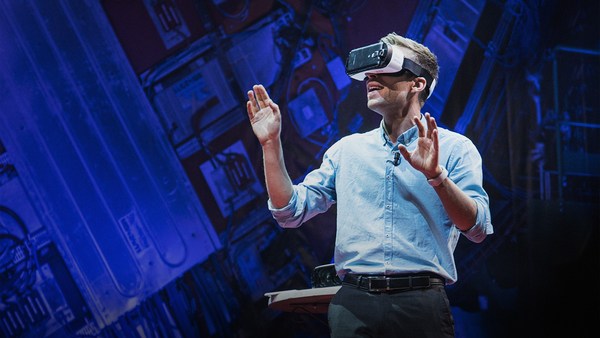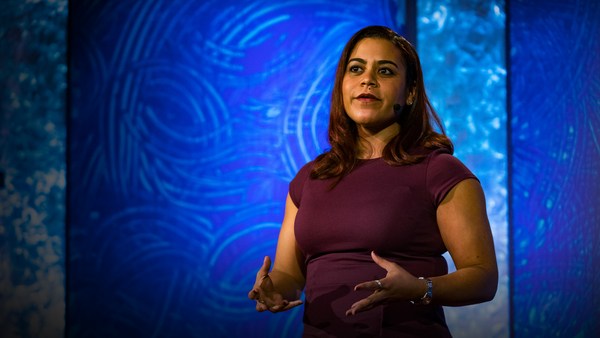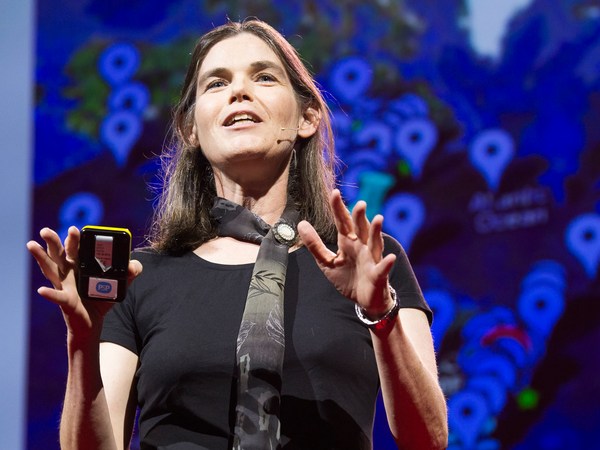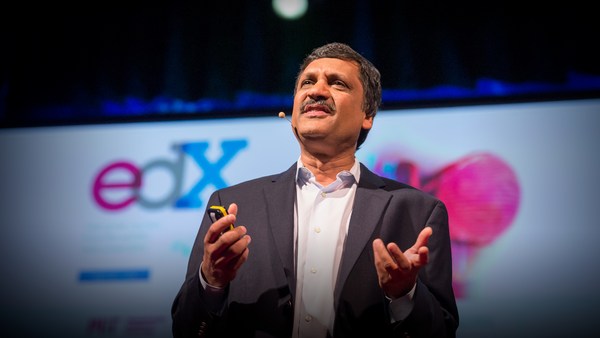How did you discover your passion or find your career? Were you exposed to it? Or was it trial and error? As child rights advocate Marian Wright Edelman said, "You can't be what you can't see." Fortunately, we now live in a time when emerging technologies may help us to solve this problem.
For the past two years, I've been developing an extended reality program that enables middle school students from across the country to take on the role of a marine biologist -- even if they've never seen the ocean. As one seventh grader who recently completed our program said, "I could see myself as a scientist, because I enjoyed this game."
This feedback really excited me, because too few students do see themselves as scientists. A 2014 study showed that 57 percent of eighth- and ninth-grade students said, "Science isn't me." Coincidentally, also in 2014, I met Mandë Holford, a marine biochemist, and Lindsay Portnoy, an educational psychologist. The three of us shared a passion for getting students excited by and comfortable with science. We thought about how we could give children the most realistic experience of a scientific career. We discussed the research; it showed that students felt comfortable taking risks when playing games.
So the three of us started an educational games company to bring science to life. Virtual reality seemed like a low-cost way of increasing access. In addition, academic research has shown that virtual reality may lead to increases in learning retention. This was perfect for us, as we wanted to be in schools so that we could reach the most number of students possible, particularly students who have been underrepresented in science.
So, with funding from the National Science Foundation, we began developing our extended reality program that combined virtual reality with personalized digital journaling. We worked with teachers while developing it to ensure that it would fit seamlessly into existing curricula and empower teachers to use cutting-edge technology in their classroom. We designed the virtual reality for Google Cardboard, which requires only a smartphone and a 10 dollar VR viewer made of cardboard. With this inexpensive headset, students are transported to an underwater expedition. Students use their digital journal to write down their notes, to answer questions, to construct models and to develop hypotheses. Students then go to the virtual world to test their hypotheses and see if they're accurate, much as scientists go to the field in their careers. When students return to their digital journal, they share their observations, claims, reasoning and evidence. The students' written answers and virtual interactions are all updated live in an educator assessment dashboard, so that teachers can follow their progress and support them as needed.
To give you a better sense, I'm going to show you a little bit of what students see. This is the virtual reality when they're underwater observing the flora and fauna. This is the digital journal where they're constructing their models based on this abiotic data to show what they expect to see. Here, they're supporting that with qualitative statements. And this is the educator dashboard that shows progress and enables [teachers] to see the students' answers as they go.
When we were creating BioDive, again, we really wanted to focus on access, so we designed it to require only one phone for every four students. We also knew how collaborative science work is, so we constructed the experience to only be solved through collaborative teamwork, as each student is an expert in a different geographic location. Given that these children's brains are still developing, we limited each experience to last a maximum of two minutes. And finally, because we know the importance of repeated exposure for internalizing knowledge, we constructed BioDive to take place over five class periods.
We started piloting BioDive in 2017 in 20 schools in New York and New Jersey. We wanted to see students as they were using this new technology. In 2019, now, we are now piloting in 26 states. What we have heard from teachers who have taught our program: "It was a nice way to show ocean dynamics without the luxury of actually being there since we are in Ohio."
(Laughter)
"It's pretty mind-blowing." "The students were totally engaged." But what really gives us hope is what we're hearing from students. "I liked how it felt like I was there." "It's interactive and a fun way to learn." "It really gave me realistic examples of how these organisms appear." "I could see myself as a scientist because it seems really fun."
Our feedback wasn't always so positive. When we began developing, we started off by asking students what they liked, what they didn't like and what they found confusing. Eventually we began asking what they wished they could do. Their feedback gave us concrete items to build in to be sure that we were including student voices in what we were designing. Overall, what we have learned is that this is the beginning of a new platform for giving students both voice and ownership in deciding how they want to have impact in their careers.
We focused on science, because we know we need scientists to help us solve our current and future challenges. But virtual reality could support students in any area. How could we support students in exploring all of their desires with these eye-opening experiences and chances to learn from primary sources? Could we create VR for inexpensive headsets that lets them be immersed in oral literature or in critical moments of human history?
Extended reality has the potential to change the trajectory of our children's lives and lead them to careers they never imagined by giving them the chance to see what they can be.
Thank you.
(Applause)





